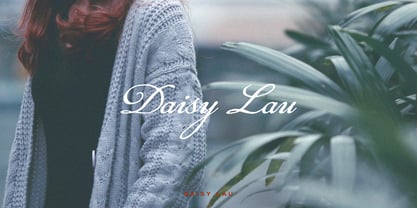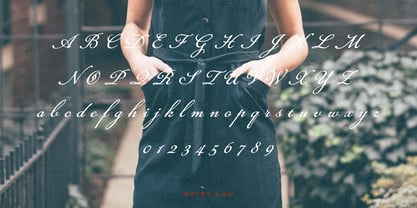Seleccione este tipo de licencia cuando esté desarrollando una aplicación app para iOS, Android o Windows Phone, y vaya a incrustar el archivo en el código de su aplicación móvil. va a incrustar el archivo fuente en el código de su aplicación móvil.
Daisy Lau
por Dharma Type


Sobre la familia Daisy Lau Fuente
Basado en algunas escrituras del siglo XIX. La textura de tinta da un aspecto realista a la escritura. La sensación de escritura suave crea un ambiente antiguo y nostálgico. Rising Star en marzo de 2007. Hay otras dos escrituras diseñadas con el mismo concepto. -Daisy Lau -Lily Wang -Pansy Bo
Diseñadores: Ryoichi Tsunekawa
Editorial: Dharma Type
Fundición: Dharma Type
Propietario del diseño: Dharma Type
MyFonts debut: 10 de enero de 2007

Acerca de Dharma Type
Hasta ahora, Dharma Type ha publicado un centenar de tipos latinos, incluido Bebas Neue (fuente abierta y gratuita fuente), y muchos de sus fuentes han aparecido en diversas publicaciones y se han utilizado en múltiples medios, como títulos de películas (por ejemplo, La la land), logotipos de marcas y carteles.
Seguir leyendo
Leer menos